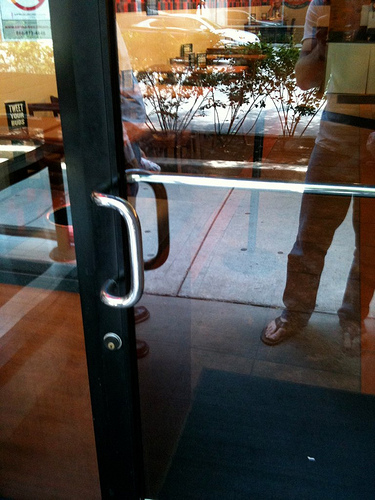Chapter 1: The Psychopathology of Everyday Things
The human mind is exquisitely tailored to make sense of the world. Give it the slightest clue and off it goes, providing explanation, rationalization, and understanding.
Introduction
This chapter of The Design of Everyday Things introduces and formalizes basic concepts and principles of design from observations of everyday objects. Why some objects, as simple as doors, please their users while others frustrate them.
Definitions
-
Visibility: correct parts must be visible, they must convey the correct messages; indicates the mapping between intended actions and actual operations
-
Affordance: the perceived and actual properties of the thing, primarily the fundamental properties that determine how it can be used. Affords = “is for”
Examples:


-
System Image: the visible part of a device or system
-
Mental Models: the models people have for themselves, others, the environment, and things with which they interact. Formed through experience, training, instructions, or by interpreting perceived actions and the System Image
-
Mapping : the relationship between two things Example: controls ⇒ their resulting movements and the effects in the physical world
-
Natural Mapping: mapping that takes advantage of physical/spatial analogies and cultural standards Examples:


- Additive Dimensions: add more to show incremental increases Examples: amount, loudness, weight, length, brightness, etc.
- Substitutive Dimensions: substitute one value for another to make a change Examples: pitch, taste, color, location
-
Feedback: sending back information to users about what actions have been performed Example:
 - Tactile feedback of buttons - Tones mapped for each button - Clicks, tones, to inform state and progress of a call or operation - Sidetones, the voice signal feedback into the ear to help regulate loudness
- Tactile feedback of buttons - Tones mapped for each button - Clicks, tones, to inform state and progress of a call or operation - Sidetones, the voice signal feedback into the ear to help regulate loudness
Principles of Design
-
Provide a good conceptual model - The proper System Image and immediate feedback for each operation can help users form a clear, concise, and correct mental model
-
Make Things Visible
- Use good natural mappings and proper visibility to help the user understand of possible operations, their effects, and the system state
- The number of controls should be ≧ the number of functions a device performs, so each can be specifically mapped to a particular function
Designer’s Responsibility
The Designer must balance the conflicting needs of others that help realize a product design:
- Manufacturer: the product can be produced economically and efficiently
- Store: the product should be attractive to customers
- Purchaser: the price, appearance, prestige value of a product at the Store
- User: the functionality and usability of a product at home
- Repairer: the product’s maintainability; how easy it is to take apart, diagnose, and service
Development of a Technology

The Paradox of Technology
The same technology that simplifies life by providing more functions in each device also complicates life by making the device harder to learn and use